There’s an ongoing debate among fishkeepers about whether Tetra’s SafeStart and API’s Quick Start even work.

What is the difference between Tetra SafeStart and Tetra SafeStart Plus anyway?
Starting a new tank can be stressful for both you and your new fish buddies.
The logic behind these products is solid, but that’s in theory.
Is there a safe dose or an overdose?
Should you do a fishless cycle?
What’s the reality? The good news is I have tested them both…twice.
I’d be more than happy to show you my results and point you in the right direction.
Shall we?
Main differences – API Quick Start versus Tetra SafeStart Plus?
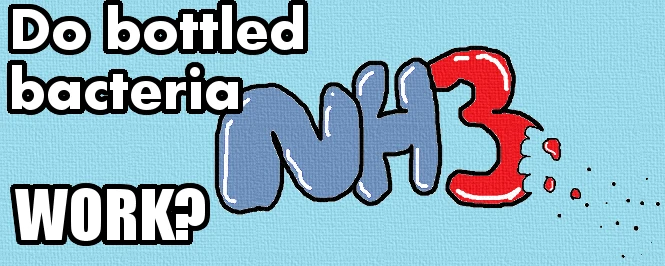
Both products claim to have live nitrifying bacteria that will speed up or reinforce your nitrogen cycle.
They contain two stains of beneficial nitrifiers – one that turns the ammonia into nitrites and one that turns said nitrites into harmless nitrates.
Here’s the truth about the Tetra SafeStart vs API Quick Start comparison:
The difference between the two products is that API Quick Start can be used in both freshwater and saltwater aquariums whereas Tetra SafeStart can only be used in freshwater systems by design. These aquarium cycle starters also contain slightly different strains of bacteria, which affects how fast each product works.
Both Tetra Safe Start and API Quick Start will work, given that they are applied in a correct manner. The cycling of a new tank will speed up significantly but it won’t happen overnight.
Generally speaking, with proper use you can realistically expect to wait about 14 days to fully cycle a fish tank with API Quick Start. Tetra SafeStart takes about the same time although often it may finish the process in just 10 days. Dosage plays a major role in success.
Unfortunately, following the instructions on the back is not something that will help, as they are pretty vague.
After experimenting hard I’ve managed to highlight what strengthens your chance for success, eventually finding a process that, in my opinion, is foolproof.
I ran two tests on both before actually using them in a real fish tank project.
The only disappointing part is that they will not cycle your fish tank the same day.
Also, by the “add fish instantly” on the label they don’t mean all the fish the tank can hold but rather just a couple, until the beneficial bacteria settle.
Both API Quick Start and Tetra SafeStart can be added with live fish in the tank.
The bottles obviously don’t contain substrances harmful to fish, just the opposite.
How to use them and make them work?
After running a couple of tests I am confident to share my success formula with you.
Going through hundreds of forum threads and speaking with fishkeepers I know, I did find confirmations of my findings.
This means that my logic was correct.

Firstly you’d need to get the right bottle of bacteria.
by Cczman
Safe Start and Quick Start both contain live “inactivated” bacteria. By being inactivated like this the products last longer on the shelf and are easier to store, which makes them more beginner-friendly.
Both brands are claiming no refrigeration is needed.
The perfect temperature for the bacteria’s shelf and in-water life would be between 40°F and 80°F (5°C to 25°C).
Going beneath or above that range may spoil it, by killing the microorganisms and rendering the product useless.
Trusting your local fish store is okay, but I do prefer getting mine over at Amazon (link that will open in a new tab).
Anyway, if you do insist on getting the bottles from your local market make sure that they were safely stored and aim to get the most recently shipped ones (with the farthest expiration date).
Some instructions before you start are:
- Get a bottle that has been manufactured as recently as possible – The newer the bottle, the better. Also, get at least two bottles, I will explain why later.
- Choose a bottle meant for a larger aquarium than yours – For me, it worked best when I used the 3.38 Oz bottle of Tetra SafeStart Plus for my 20 gallons, and also when I doubled the dose recommended for the API Quick Start.
- Make sure the ammonia is not already deadly high – everything above 2.5 ppm of ammonia will be harmful to your fish AND the bacteria. Before you start with the nitrogen cycle you need the ammonia lowered as much as possible.
With that out of the way, you can start cycling your aquarium.
Follow these exact steps to properly use Tetra SafeStart or API Quick Start:
- Dechlorinate your water no less than 24 hours before adding the bacteria.
Use a commercial dechlorinator.
Leave the filters running during that time.
Chlorine will kill the not well-established cycling bacteria. Also, when having live fish in the tank you first dechlorinate the water and then add it to the tank.
- Shake the bottle of bacteria hard.
This part is really important.
Shake the bottle really well before adding the bacteria.
- Pour in double the recommended dosage.
For Tetra SafeStart users just add the WHOLE bottle of bacteria to your aquarium.
Add it all.
You can’t overdose with aquarium cycle starter products, unlike with dechlorinators and other water conditioners.
It’s simply beneficial bacteria. The more the better.
- Add 1 SMALL fish per 10 gallons of water.
Adding fish to your new tank should be done shortly after you’ve poured in the bacteria, within a maximum of 2 hours.
This proportion of fish-to-volume of water is what worked best for me.
By definition, this is where most people make a mistake and end up with dead fish in their new aquarium.
Adding just one small fish per 10 gallons of water is the safest way of controlling the ammonia levels. Here you can find some hardy beginner fish options.
If you’re cycling a 5-gallon tank it’s really best to put a source of ammonia in it and no live fish. Such source could be fish food.
Anyway, it’s technically true that you can stock the tank up, but you’d need very clean fish (ones that do not poop as much) and you’d have to feed them very carefully to either not overfeed (leaving extra ammonia work for your bacteria) or starve them (being too cautious not to overload your tank with ammonia).
- Feed your fish every other day.
Test your water frequently, if you notice a spike in ammonia it’s okay to not feed your fish that day.
Many fish can survive more than a week without food, so they will be fine.
- Don’t do water changes until the 14th day.
If and only if the ammonia starts rising for no apparent reason you can do a water change to lower the levels down.
Add another bottle of the product if that happens.
This is why I told you to get a second bottle.
However, there’s another solid reason behind this point.
You’re probably using chlorinated tap water for your fish tank. In order to perform a water change you’d need to dechlorinate the water first, right?
Water facilities in the more developed cities use Chloramine instead of Chlorine for disinfection.
Chloramine represents the chemical bond between chlorine + ammonia.

Seachem Prime (a commonly used dechlorinator), for example, breaks down chloramine to chlorine and ammonia, takes care of the chlorine, and detoxifies the released ammonia.
by JustSuppThings
Every product that claims to detoxify ammonia likely transforms it into ammoniUM.
Ammonium is harmless to bacteria and fish alike, but the detoxifying effect only lasts for 24 to 48 hours if your tank’s pH is above 7.0. This does not mean that having more than 7.0 pH is bad, it just means that using ammonia detoxifiers in a non-cycled tank is not a good long-term solution.
Anyway, after that, the ammonium turns back into ammonia, which means you now have more of the latter in the cycling aquarium.
The more Chloramine your water facility uses, the more the released ammonia after the effect of the detoxifier expires. This could consequently harm your bacterial biofilter and fish if the contents turn out to be too high for the bacteria to handle in time.
Author’s note: This only affects new aquariums that do not have an established colony of nitrifying bacteria.
Anyway, another argument for not changing the water in the first 14 days of cycling (unless there’s a dangerous ammonia spike out of nowhere) is that studies suggest that nitrifying bacteria use ammonia instead of ammonium for their source of energy.
Continuously using a dechlorinator that turns ammonia into ammonium could actually slow down the nitrogen cycle in your aquarium even further. The nitrifying bacteria would not be interested in the latter and will not be stimulated to multiply further.
This can easily turn into a vicious circle and a never-ending supply of Prime for a new, non-cycled fish tank…
If you’re using bottled bacteria you’d want your fish tank to cycle as soon as possible, right?
Tip: The best way to avoid all of this is by having a separate batch of dechlorinated water to use for water changes during aquarium cycling. The “emergency batch” should be dechlorinated at least 24 hours before use. Add a little bit of bottled bacteria to it to make up for the residual ammonia and it’s good to go.
Suggested Read: How Aquarium Fish could Die After a Large Water Change
Despite the described scenario Seachem’s Prime still remains a fantastic option for water dechlorination in a fully cycled aquarium. I’d recommend it to anyone who is using tap water for their aquarium. The residual ammonia from breaking down the Chloramine would be negligible to the already-established bacterial colony in a mature tank.
Anyway, after 14 days of cycling, you can perform a water change the regular way.
- Don’t test the water for the first 2 days.
It’s okay to test it whenever you want but that is something that I stuck with throughout my tests.
- Turn the UV lights off for the first day or two.
Ultraviolet light does affect the bacteria in a negative way.
For it to successfully establish I’d strongly recommend not turning those lights on the first day after the application (if you have them).
Keeping the fish tank cycled
After the second week you can gradually add fish, but of course, don’t add 10 at a time. This would overwhelm the bacteria.
When doing the first water change the ammonia may go up, as there may be some ammonia in tap water, but I wouldn’t worry about it that much.
The levels should be overall low and should quickly get back to normal within the next 12 hours or so.
Also, don’t freak out if you don’t see your nitrites spike when water testing.

If you’re using Tetra’s SafeStart the process will skip the nitrites building up and will directly build into nitrates.
by flexed_guitar
Don’t worry if your aquarium becomes cloudy at first.
The water will get clear within two to three days or a week at most.
Seeing cloudy water in a new aquarium at the beginning of its Nitrogen cycling is completely normal and it means that different bacteria are establishing their hierarchy.
Visit the link if you’d like to understand the process in depth. Understanding aquarium microfauna is, in my opinion, a core component of long-term success in fish keeping.
And that’s not an overstatement.
Which of the two should you choose? Which one is the best for your?
This is not one of those posts where I discuss the pros and cons of both products and leave the choice to you.
I have a statement:
Both can be (successfully) used for a start but If you’re starting a brand new empty fish tank and want to establish an environment safe from Ammonia, I’d recommend using Tetra SafeStart.
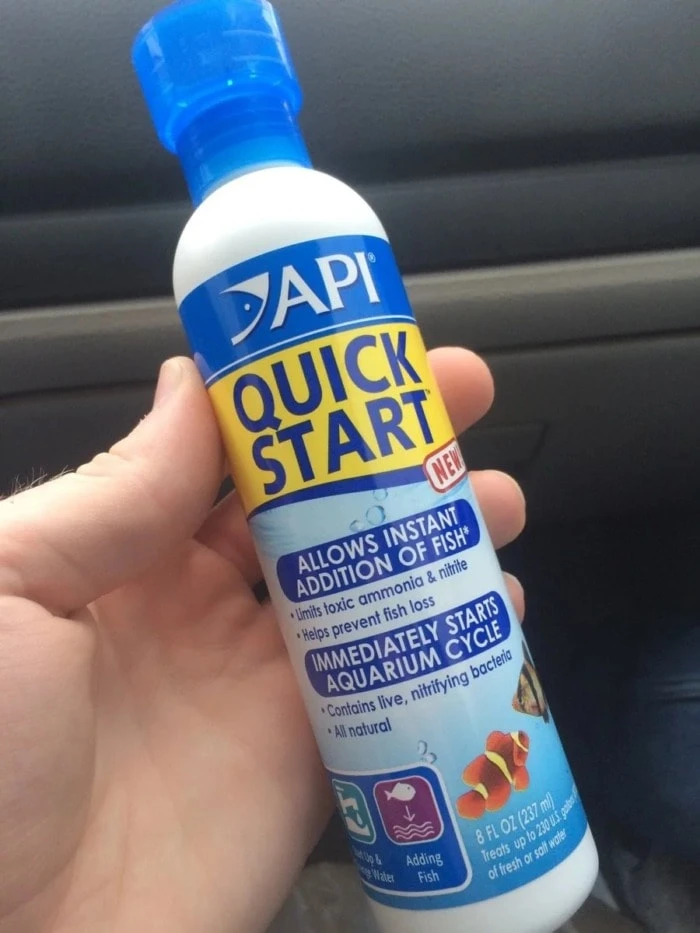
If you’re starting a brand new planted tank, doing huge water changes, or adding a lot of fish at once to an already cycled planted tank I’d go for API Quick Start.
by Tobyracer
Tetra SafeStart’s better at handling the nitrites (it virtually skips them) and API Quick Start will normalize the ammonia levels in the water quicker. The latter is more important in a mature tank with many live fish in it.
High ammonia levels may result in your fish staying at the bottom of the tank seemingly gasping in despair (click the link for an in-depth explanation of this behavior in Bettas).
The API Quick Start is more efficient when you have a planted tank as it does not handle the nitrite levels as well as Tetra’s SafeStart. Live aquatic plants prefer ammonia and nitrite over nitrate as their source of nitrogen so, by using API’s product you will both speed up the cycle and let your plants feed on the nitrite.
Note: Between Tetra SafeStart and Tetra SafeStart Plus the difference is only in the concentration of the bacteria. I’m really happy with Using the Plus version, so the instructions will remain the same.
The alternative bottled bacteria for saltwater aquariums is called Bio Spira.
API doesn’t have a saltwater version, you just double the dose.
What’s with the mixed opinions then?
Honestly, it’s probably a human error.
Seeing how (upon proper use) the products kept proving themselves to me and others I spoke to, I can only conclude that.
Then again, the negative reviews pushed me to test them myself, before anything.
Conclusion
Fishkeeping is a hobby that requires some patience.
Whether you choose to go natural or use bottled bacteria products for starting a new fish tank, you will have to wait it out a bit.
There is no shortcut for that, there are only shorter cuts…
Tell me how things unfolded for your new aquarium in the comments.

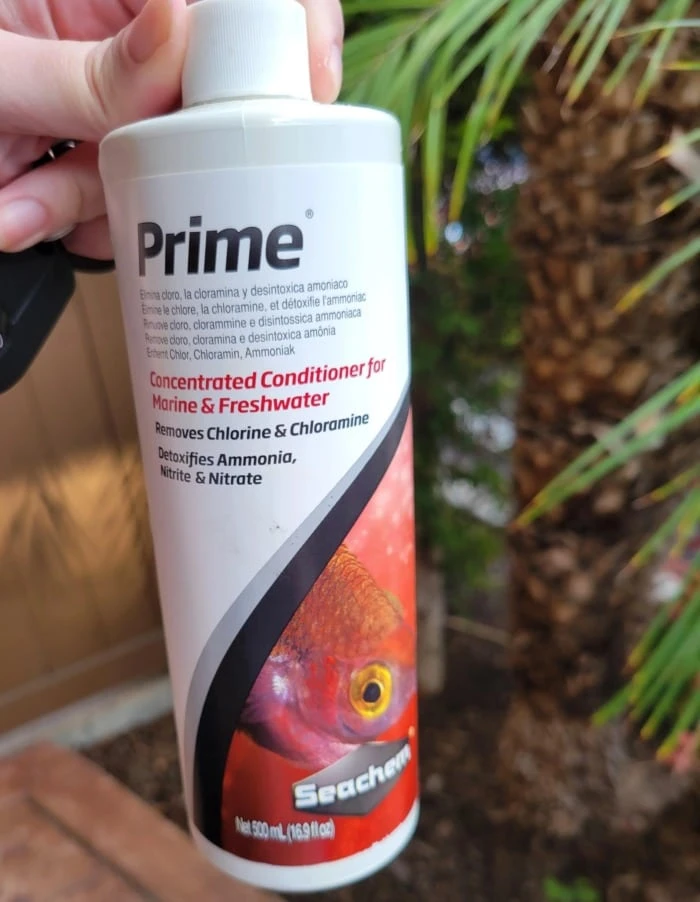

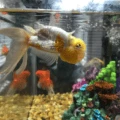
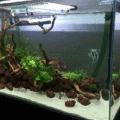





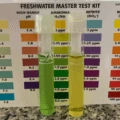

Hi! Thank you for the article! I am trying out this cycling method in my new 35 gallon planted tank. On Tuesday (today is Thursday) I tested the water right when I was putting my two new guppies in and somehow already had ammonia levels of 0.7 ppm. I was startled by there already being ammonia in the tank when I had not even put fish in yet! I think it may have been from the plants starting to melt a little bit but I am not sure.
I tested the water again yesterday and found that my ammonia had decreased to 0.5 ppm. Since ammonia dropped I tested for nitrites and got 0 ppm.
I just tested today and got 0.25 ammonia, 0 nitrites, and 5 ppm nitrAtes!
So it may be the quickstart bacteria actually working? Is this possible? I thought it would at least be a few more days before I saw any nitrates. I’m still planning to wait a few weeks before adding more fish but I thought I would share!
Hi Sophia!
Thanks for sharing your valuable experience!
Yeah, it is definitely working! It’s not a precise science, I’ve had other people share with me that it worked faster for them too.
When the ammonia and nitrite hit the zeroes you’re good to add more fish. Just remember that each time you do you’re increasing the bioload.
Don’t add too many fish at once!
Thanks for sharing again, and happy fish keeping, Sophia!
Can aquarium salt kill beneficial bacterias?
Hi,
No, not really.
Regards
I don’t know if this thread is still active, but I’m following the exact same process using Tetra Safestart. Day one started today when I gave the initial dose and added 1 danio fish to my 20 gallon tank. I’ll keep you updated on my progress. This was after an initial hard start with a small 4 gallon tank and some very bad advice from the pet store. With help from google (people like yourself) and some hard lessons I think I’m on the right track. I’m determined to give these little guys a decent life:-) They were meant to be a Christmas present for my son…….it’s turned into a project for Daddy!
Thanks for sharing your story, Pete.
Keep me posted. 🙂
So, I’m actually 4 days in now (took a day or two for original post to appear) and everything seems to be OK? I initially double dosed with Safestart as others recommended and did my first water test today. Ammonia 0.25ppm, Nitrite 0, Nitrates 5ppm. It’s worth noting that a lot of tap water in the UK has at least trace amounts of Nitrate. I did test mine and it came up postive (<5ppm), so the 5ppm is negligible. I also had to add a second Danio from from my small tank as he was showing signs of significant stress. Moving to the bigger tank, he's happier although seems to hide a fair bit! I feed sparingly once a day. I don't think my smaller tank will ever cycle properly (thanks for the awful advice pet store!), however I manage to keep Nitrites to zero and Ammomia around 0.25-0.5ppm (water changes every other day). Fingers crossed:-)
Sounds to me that everything is going the way it should. The tank will cycle, no worries. Only interchange water if the ammonia starts rising during cycling. Give it some more time, but you’re on the right track indeed.
So, after just over two weeks, everything seemed fine. Ammonia virtually zero and Nitrates 1-3 ppm. I added a couple more danio and a couple of black cory’s. Ammonia seemed to be rising (<1ppm) so I also did a 50% water change. Hadn't changed the water for 2 weeks (as recommended), so it didn't concern me. Also added a capful of bacteria after introducing the new fish. After a few days I noticed the Ammonia was starting to spike (1ppm). It seems to do this again a few days later. Could it be that my tank had not cycled fully after 2-3 weeks? The second week was rock steady in terms of stable parameters. Was I too eager in adding more fish? Hopefully it just needs to settle down, but I am hoping I haven't ruined my initial hard work?
Hey,
It seems to me you added 5 to 6 fish at once in the 20 gallon aquarium? That could prove too much in smaller tanks, yes (20 is considered small). You just increased the bioload and now the tank needs more beneficial bacteria than with its previous bioload.
Cycling a tank is not something you do once and leave it done. If your tank is currently cycled, this means it has just enough beneficial bacteria to handle its current bioload. Adding too much fish at once could definitely cause an ammonia spike. I hope I explained this in an understandable way.
So no, you did not ruin it in that way, it just needs to adjust itself again. Do add more bottled bacteria if the ammonia keeps rising or is not going down.
Good luck, Pete 🙂
Yeah makes perefect sense, i added 4 more fish. I have 7 in total now (4 danio and 3 Cory’s). I plan to add a couple more, but not until everything settles down. We are talking months not weeks this time:-) The fish seem really happy and show no signs of stress etc. I did add somemore bacteria and I will add a capful or two during the next water change. Glad I took the advice of buying the second bottle! The ammonia is reading around 0.25ppm, but remember I also get positive readings from my tap supply. In any case I added a few drops of Prime to address this. I don’t ever expect to get a zero Ammonia reading, but you never know! Of course I didn’t use Prime or replace water during the 2 week cycling phase.
I guess for now i will just monitor the tank, provide weekly (or bi weekly) water changes of at least 20% and let the aquarium settle. I’m hoping my story provides evidence of success, but also points out that having an aquarium is not as straightforward as people might think. I would strongly advise ignoring pet store advice as I could have had a much less stressful time initially! I’ll let you know if i have any further issues and i’ll drop you a line in a few weeks. I’m sure this will be to say i’m all good!
🙂 Thank you so much for all your input.
When I think about how my first aquarium was set when I was little years ago (my dad and I had no clue what’s going on) and… I’m kind of ashame of what I put my fish through. You can imagine my shock when I first learned about the whole nitrogen cycle thing and dechlorinating water… My guppies were troops back then!
4-5 weeks on from the first dose of Safestart. To be honest things have been stable for the last two weeks now. The little spike settled down as you suspected. As I always seem to get Ammonia 0-0.25ppm I decided to do a few additional tests. I did 3 x 50% daily water changes (without adding Seachem Prime) to see if could get the magic zero, but no joy!? I am thinking it’s a false postive or a very low negligible reading?
I invested in a Seachem Ammonia Alert device, which reads <0.02ppm. This only looks at free Ammonia (NH3) as opposed to the non toxic form Ammonium (NH4). If I have Chloramines in my tap water then potentially Prime or my other water conditioner converts these to Ammonium, which would be picked up by API test since it picks up both forms. Does this make sense? I also tested Nitrates before adding Prime and it reads 5-10ppm. Nitrite has been zero for the whole duration. My tank is pretty much fully stocked (5 Danio and 3 black Cory's). I guess I'm a success! Moving forward weekly/bi weekly water changes of 30-50%. I always use Prime as my water conditioner (is this OK?) and my ammonia alert device is good for 6-12 months. I wouldn't rely on this completely as I'll also do monthly water checks.
The one thing I will say is that I am surpised my orignal fish have survived (great advice Pet store……not!). However one danio is bloated, swims normally, eats, but is definitely a fatty:-). It's not pine coned etc, so I am not worried about dropsy. The others are normal, so I am thinking it may have a digestive problem……..probably from the excessive Ammonia exposure!!! I guess I monitor and give it the best life it can have?
Hi again,
In my opinion, your theory about Prime converting Chloramines to Ammonium is spot on (It’s what I would’ve thought along with your tap water coming with ammonia in itself already).
Also Prime is a fantastic product to use when you have an established aquarium, so keep it up.
It’s great that your fish have survived!! Luckily Danios are pretty hardy on their own, so there’s that.
Bloated could also mean a swollen swim bladder or impaired osmoregulation (ability to regulate body fluids). The former can be caused by constipation among a variety of reasons and the latter could be caused by a sudden drop in ion contents in the water (Nitrates are ions, and a large water change lowering them all at once could do that). You could try doing the water changes partially if that aligns with your free time and see if this negates the bloating (read, do 2x 25% water changes set apart by 1 to 2 hours time instead of a single 50% one).
Anyway, good luck and congrats on your new cycled aquarium! It’s time to sit back and enjoy it 🙂
The only thing I will say is that I can’t remember this particular fish ever been slim! She’s always looked pregnant:-) I’ll try the smaller water changes as you suggest, but I suspect the ammonia exposure has definitely not helped. I did tried de-shelled peas and not feeding for 2-3 days, but no change. I’m thinking this damage may well be permanent:-(. Such a shame as I really wasn’t intending to use a fish in such a sacrificial way. Unless it’s an abnormality that was already there?
That’s also a possibility, sure.
Well… as you said, give it the best possible life, and there’s a chance that it will go away with time. You seem very engaged with your aquarium (bravo!) and I don’t doubt that you’ll maintain the water pristine and healthy, nurturing some happy fish.
I always had pets growing up (dogs, gerbils, hamsters, budgies, tortoise etc), but never a fish! My son wanted them for Christmas, but lost intertest. They are practically mine now and as with all pets they are part of the family. You give them a home, your responsible!
Having said all that, i think a lot of fish are negleted and they need so much more care than people think. It’s worth it though! Mine are quite shy and in time they will have real plants and I’ll mix up food etc, but I want them to relax for a few months now:-)
What I will say is if I hasn’t come across this forum, then I think they would be suffering further with a slow cycling process and I would have less fish:-( It pays to listen to others who have more exprience (like yourself). I’ll miss this forum as I’ve enjoyed your advice and support. If I have any further issues, then i’ll be in touch. At least I can enjoy the aquarium and you can give yourself a big pat on the back for making my story a success!! Many thanks.
Sure, Pete, that’s the point of the blog 🙂
Good to hear you’re willing to put in the effort, man.
Happy fish keeping!
Hey there, I’ve read the comments & while I’ve learned a lot, nothing really specifically addressed my questions (but sorry if I missed it).
Here’s my situation:
I have a 75 gallon tank that will be planted. It was filled two days ago, and water conditioner was added, as well as substrate for plants (I used two 20lbs bags of Eco Complete (which claims to already have bacteria included), one 8 lb bag of Fluval Statum, and two 20 lb bags of a small grain sand.
My plan was to not add fish for awhile, because I will be constantly messing with the tank for awhile: adding various plants & decor & wood, and my thinking was that it would be stressful for any fish to not only be dealing with a new tank, but also the potentially constantly changing environment as I add and remove things that may affect pH, not to mention stirring up the substrate a lot.
Last night, I did add some API Quick start (just the standard dose), thinking I could at least jump start the cycling process while I am doing all of this.
But then today I read your article and now I’m wondering if I just wasted the Quick Start and potentially screwed things up? (The API was added <24 hours after the water conditioner *and I don’t have any fish in the tank yet.)
What do you suggest? It will be at least a day or two before all the decor is added, and I will still be gradually adding plants here and there until…well, until I’m happy, lol. I do have a Betta in the house that I could add, but would he really help much in a 75 gallon? I’d prefer not to stress him out if I can help it.
I asked at my LFS (a place with really knowledgeable folks, not a big box store), and was told not to bother with adding any fish food or ammonia to the tank for cycling, because tap water already has enough for that. Is that still true, though, if I’ve added the Quick Start?
Where do you think I should go from here? I’d prefer to be mostly set up on the plants and such before adding fish because that’s one less thing to worry about. But I can, if it would be a smarter thing to do. Suggestions?
Question 2: I have reread your article many times and I’m still fuzzy on why you should wait a few days after water conditioner to add the Quick Start. I get that the ammonia comes back after a day or two, but how does adding the Quick Start into a tank with higher levels of ammonia make sense, especially considering the Quick Start itself contains ammonia? Wouldn’t that overwhelm the good bacteria even more?
And then if you also had fish in there…aren’t we adding a bunch of ammonia all at once? Everyone else seems to be understanding what you were saying, but I’m totally confused on the logic. Wouldn’t it make more sense to add the Quick Start before that ammonia spike post-conditioner, so it has to time be a bit established?
3: When you say “small” fish per 10 gallons, what do you mean? An inch?
4: Will having a planted tank change what I can expect from the various test results in the cycle?
5: How does the various plant substrate affect any of the things you said? Specially the Eco which supposedly has bacteria included in it.
6: Does water temp and/or pH affect the Quick Start process at all?
Thanks so much for your time and help. I’m super interested in all of this. Mostly I’m just completely confused on what I should do now, so if you can only answer one question, please pick the first one. 🙂
Thank you so muchly!
Hi there,
Thank you for thorough comment. These help me understand the situation better, which in turn helps me help you… 🙂
Anyway onto your first question:
Eco-Complete is inert in that it will not degrade with time. Fluval Stratum on the other side is a depleting substrate, which means it will leach nutrients in the water column for the plants to employ. These nutrients are usually in the form of ammonia, which is deadly to fish. HOWEVER, depleting substrates also buffer the pH. When the pH falls below 7 (water gets more acidic) ammonia transforms into ammoniUM, which is not at all harmful to fish. Still, the pH drop itself may be harmful because it’s a logarithmic scale (read 5 pH is TIMES more acidic than 6 pH). Therefore when starting a planted tank with a depleting substrate (good call btw) I do not recommend adding fish, because of the whole cycling + pH dropping situation. I hope I explained that well. BTW something not many know is that tap water does come with organic material but more importantly – it comes with heterotrophic bacteria. These are not the “beneficial nitrifiers”, but rather the ones that mineralize organic matter and produce ammonia in the process. They usually cause an aquarium to become foggy during cycling (I have an article on that if you’re curious). In conclusion – you did not screw up anything. Ammonium will still be leached in the water by the depleting substrate and the dose you poured will help with establishing the bacteria that would establish either way (slower without your interference anyway).
Question 2: The ammonia in the product is in negligible amounts, but may show up on more advanced water tests. It should not read more than 0.25 ppm, which, considering that it comes with a full pack of nitrifying bacteria is okay to have. In fact, it’s so negligible that if you do not add fish right after that you are wasting the potential of the bacteria. I’ve repeatedly done the whole cycling process with instantaneous addition of fish (according to the instructions above) and had no problems. To my understanding, the water conditioner breaks down the chloramine, turning it to ammonium and chlorine. Ammonium is still a food source for bacteria, however, it’s not harmful. Another thing to mention is that ammonium is harder for bacteria to convert (and also slower). I think that somewhere in the article I mention that ammonia in (very) high concentrations is toxic to beneficial nitrifiers as well. When the ammonium turns back to ammonia after the detoxifying process ends the spike may actually reduce the bacteria colony, potentially slowing the cycle again. For this reason I don’t recommend doing it this way.
Question 3: between an inch and 2.5 inches would be a good approximation. Perhaps, I should add this to the article.
Question 4: Definitely. As I mentioned above, pH will be unstable at first. Depending on how well-planted the tank is you could see fewer nitrates showing. Even fewer if you have floating aquarium plants because they suck it up pretty quickly.
Question 5: If the aquarium water becomes too acidic (like 6 or below) this could stop the nitrogen cycle. The fish and plants will be fine because the plants will eat up everything and the ammonia will remain at its ammonIUM form (harmless). Bacteria will not like the ammonium as much as the ammonia and will eventually reduce their numbers, because that’s not as viable for them to feed on. However, if the PH rises for some unknown reason the ammonia will become toxic again. Cycling a planted tank is tricky. If you notice a very slow cycling process, you can either do a water change (slightly raising the pH again) or add some crushed coral (baking soda is not a good option for aquatic plants) to increase it and help maintain the cycle until it’s done. After that, you maintain it at that level. Your other option is to just maintain a stable pH at the lower end (which in an aquarium with a depleting substrate should happen naturally). However, for the second option to work you should really test your tap water so that it doesn’t disbalance the PH upon a water change. If that’s the case, consider using Reverse Osmosis / Deionized water with weak remineralization (added hardness) for water changes.
Hope this helps to a degree.
I need help.
I have had a fish tank for around 8 years and I’m not going to lie I haven’t been the best at keeping it clean but my fish always seems to do ok. A few months ago I lost my plecostomus. I’ll admit I have never done proper research into maintaining a tank. We just got a new Pleco and a bottom feeder and I thought it would be a good idea to do a whole tank clean out. I put my fish in a separate tank with the water from the big tank and emptied the whole tank and cleaned the rocks since they were all full of fish waste. After refilling the tank, treating it with tetra aqua safe plus and letting the filter run for a while and getting the temperature back to normal I put all the fish back in. (4 Long fin zebra danio’s , small pleco and algae eater and my big 8 year old red fin shark. That was Tuesday. Today my shark is stuck in his cave floating upside down. Clearly after reading this article I have made a horrible mistake by putting them all back in without more extensive water treatment.
All this is to save I am overwhelmed and don’t know what my first steps should be to help my poor fish.
The upside-down thing is a problem with the swim bladder which can be caused by stress from a sudden change in the environment (read a large water change). I have an article on that, but what you can do is reduce the feeding to once every 2 days. Also, look into feeding them more fiber to prevent / fix any constipation.
On the aquarium water itself – do a water test (use a master kit, not strips) and check the readings. If ammonia or nitrite are present then immediately run to the store and get some bottled bacteria to kickstart the nitrogen cycle once again. Pour in the bottle and patiently wait. I have an article on nitrite control which you may find useful.
Hope this helps and good luck. I think they will be fine
About the 6th part,how many water do I have to change to lower the ammonia for 2gallon tank?.
Also,the dosage of the bacteria still double the dosage afterward right.
First time get a fishtank so quite confused😣
So if I use goldfish and can’t change water for 2 week,I can still clean the food/fish waste at floor tank by siphoning right?
So if I used goldfish ,I can’t change the water for 2 weeks but that doesn’t mean if I want to clean the bottom by siphon the fish/food waste right?
So im doing my first tank. Been 7 weeks of fishless cycle.ammomia at 4,nitrites high. Nitrates at zero even thou used sequem stability. So what i do is do half water change to lower ammonia then fill back up and use drclorintor. Then dump whole bottle of safe start and add 5 fish for my 55 gallon and monitor?
Yes, correct. However, do make sure you have way less ammonia than that before dumping anything alive in the tank.
If you can’t lower it through a water change then wait a bit more for when it is negligible (around 0.5) and then add the fishies.
Good luck!
I did exactly that. Tested nitrates and they orange now. Should i add another’s bottlento make it red? Ammonia at 2ppm . fish seem to be doing fine. They playing around bubbler and ate the food this morning
Hi, 2 ppm is a bit high, so you can add another bottle of TSS+ just to be on the safe side.
Sadly we’ve now had another setback as my little danio appears to have jumped out of the gap at the back of the lid where the filter cable goes overnight and has disappeared. 🙁 As well as this being v sad, Im worried it will stall the cycling process due to lack of ammonia source. Today’s test results were nitrite 0, nitrate 20, ammonia 0.25 ph 8-8.2.
Do you think I should just leave it and keep testing or crumble some flakes in as a source?
Thanks for the advice!